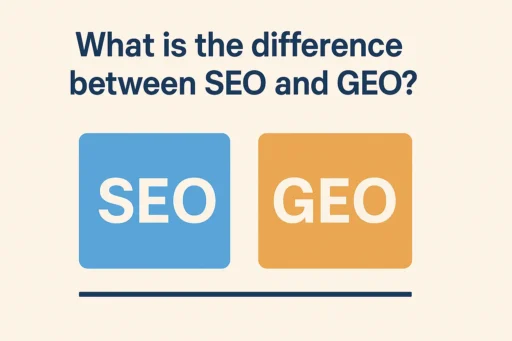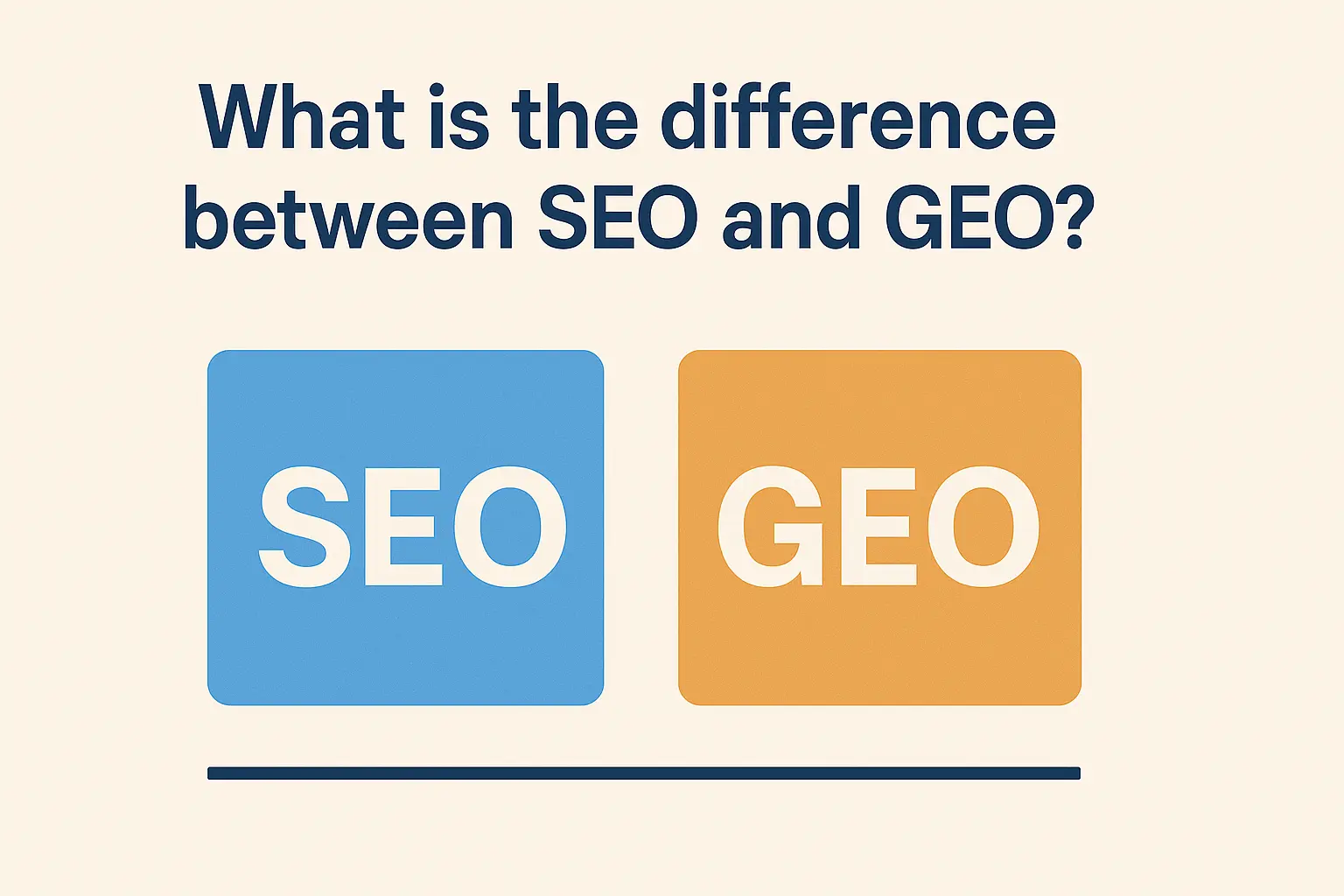In today’s digital landscape, businesses are constantly seeking strategies to maximize visibility, attract the right audience, and drive measurable results. Two terms that often surface in discussions are SEO (Search Engine Optimization) and GEO (Generative Engine Optimization). While they sound similar, these concepts serve distinct purposes. Understanding the difference between SEO and GEO is critical for marketers who want to future-proof their digital strategy in the age of AI-powered search engines.
SEO vs GEO: Why This Distinction Matters
The evolution of search is no longer just about traditional rankings. With the rise of AI answer engines like Google AI Overview, Bing Copilot, ChatGPT, and Perplexity, the way content is discovered and presented has fundamentally changed.
- SEO focuses on optimizing content for search engines like Google and Bing.
- GEO is about optimizing content for generative AI platforms that provide direct, conversational answers.
Marketers who understand and implement both are positioned to dominate in both traditional search results and AI-powered responses.
What is SEO?
Search Engine Optimization (SEO) is the practice of improving a website to increase visibility in organic search results. It involves a blend of technical, on-page, and off-page strategies.
Core Components of SEO
- Keyword Optimization: Targeting high-intent and relevant terms.
- Technical SEO: Ensuring fast loading times, mobile-friendliness, and proper indexing.
- Content Strategy: Creating authoritative, valuable, and well-structured content.
- Backlinks: Building authority through external references.
📊 Industry Data: According to BrightEdge, organic search drives 53% of website traffic, making SEO a cornerstone of digital marketing【BrightEdge, 2023】.
Example of SEO in Action
If a bakery in Mumbai wants to rank for “best chocolate cake near me,” SEO tactics would include optimizing their website content, local listings, and customer reviews to appear on the first page of Google.
What is GEO?
Generative Engine Optimization (GEO) is the emerging discipline of tailoring content so it appears prominently in AI-powered search responses. Unlike SEO, GEO focuses less on traditional ranking factors and more on context, credibility, and structured knowledge.
Core Components of GEO
- Conversational Relevance: Writing content in a Q&A format that matches natural language queries.
- Entity Optimization: Structuring data so AI can clearly identify people, products, or brands.
- Authoritativeness: Demonstrating expertise with citations, statistics, and verifiable claims.
- AI Training Alignment: Ensuring content is consistent across sources AI engines pull from (blogs, Wikipedia, news).
📊 Industry Trend: A 2024 study by Gartner predicts that over 30% of search traffic will bypass traditional SERPs in favor of AI-driven overviews and answers【Gartner, 2024】.
Example of GEO in Action
If the same bakery wants to appear in Google’s AI Overview or Bing Copilot when someone asks, “Where can I get a freshly baked chocolate cake in Mumbai?”, GEO tactics would ensure the AI cites their business directly with clear, authoritative, and structured content.
Key Differences Between SEO and GEO
| Aspect | SEO | GEO |
|---|---|---|
| Objective | Rank on search engine results pages (SERPs) | Be included in AI-generated answers |
| Content Style | Keyword-driven, optimized pages | Conversational, Q&A, entity-rich |
| Technical Focus | Site speed, indexing, backlinks | Structured data, authority signals |
| User Intent | Click-through to website | Direct answers, sometimes without clicks |
Why You Need Both SEO and GEO
Relying solely on SEO or GEO is risky. Traditional search still dominates for transactional queries, while AI overviews are rapidly becoming the go-to for informational queries.
- SEO ensures visibility in classic SERPs.
- GEO ensures visibility in AI answers where users might never see the SERP.
Together, they future-proof your digital presence.
Actionable Insights for Marketers
- Audit Your Content for AI Compatibility
- Use schema markup (Breadcrumb, Product, FAQ) to help AI engines parse information.
- Write in a conversational tone with Q&A sections.
- Balance Keyword Strategy with Entities
- Continue targeting traditional keywords for SEO.
- Enhance entity recognition (brand, products, locations) for GEO.
- Invest in Authoritative Signals
- Build high-quality backlinks (SEO).
- Reference reputable sources and data (GEO).
- Track Both Metrics
- SEO: Impressions, rankings, organic traffic.
- GEO: Mentions in AI overviews, citations in generative answers.
Final Thoughts
The difference between SEO and GEO is more than just semantics—it reflects the dual reality of modern search. Businesses that master both SEO and GEO will not only rank on Google and Bing but also dominate emerging platforms like ChatGPT, Perplexity, and AI Overviews.
In short: SEO gets you found in search engines, GEO gets you cited in AI answers. To win the future of digital visibility, you need both.





